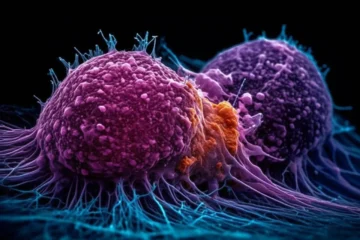Traditionally, Lyme is defined as an infectious illness caused by the spirochete, Borrelia burgdorferi. Spirochetes are actually tiny forms of spiral-shaped bacteria. While this is certainly technically correct, clinically the illness often is much more than that, especially in the disseminated and chronic forms. Instead, this includes infection not only with B. burgdorferi, but many co-infections that may also be involved.
Furthermore, in the chronic form of Lyme, other factors can take on an ever more significant role: immune dysfunction, opportunistic infections, co-infections, biological toxins, metabolic and hormonal imbalances, etc.
In general, you can think of Lyme as having three categories: acute, early disseminated and chronic. The sooner the treatment is begun after the start of the infection, the higher the success rate at eliminating it.
Under treating infections in the earlier stages will inevitably resurface, usually as chronic Lyme, with its tremendous problems of morbidity and difficulty with diagnosis and treatment at a very high cost.
Acute Lyme is relatively easy to eradicate with the use of proper antibiotic treatment. The problems start with the doctor not having a high enough degree of suspicion and variability of the quality of the testing.
In general, you can think of Lyme as having three categories: acute, early disseminated and chronic. The sooner the treatment is begun after the start of the infection, the higher the success rate at eliminating it.
– Dr. Bob
Chronic Lyme is an altogether different illness than earlier stages, mainly because of the inhibitory effect on the immune system. It has been demonstrated in vitro to inhibit both B and T lymphocytes. As a result, not only is the infection with B. burgdorferi perpetuated and allowed to progress, but the entire issue of co-infections arises.
Ticks may contain and transmit to the host a multitude of potential pathogens. The clinical presentation of Lyme therefore reflects which pathogens are present and in what proportion. Apparently, in early infections, before extensive damage to the immune system has occurred, if the germ load of the co-infectors is low, and the Lyme is treated properly, many of the other tick-transmitted microbes can be contained and eliminated by the immune system.
However, in the chronic patient, because of inhibited defenses, the individual components of the co-infection are now active enough so that they too add to features of the illness and must be treated. In addition, many latent infections which may have pre-dated the tick bite, such as herpes viruses, can reactivate, thus adding to the illness.
It is unfortunate then that serologic tests can become less sensitive as the infections progress, obviously because of the decreased immune response upon which these tests are based. So the anti-body titer may rise, and the positivity of the western blot test may increase as treatment progresses and the patient recovers. Only years after a successfully treated infection will the serologic response begin to diminish.
The severity of the clinical illness is directly proportional to the spirochete load, the duration of infection and the presence of co- infections. These factors are also proportional to the intensity and duration of treatment needed for recovery. Many collateral conditions result in those who have been chronically ill so it is not surprising that damage to virtually all bodily system can result. Therefore, to fully recover not only do all of the active infections have to be treated, but all of these other issues must be addressed in a thorough and systematic manner. No single treatment or medication will result in full recovery of the more ill patient.
The patient with co-infections could potentially be carrying Babesia species, Bartonella, Ehrlichia, Anaplasma, Mycoplasma, viruses, and possibly yeast forms.
This is the reason that a full successful treatment protocol must contain things like different classes of anti-biotics both oral and IV and they must be “pulsed” or given in bursts with breaks in between. The reason for this is that these organisms exist in different morphologic forms: spirochetes, spheroplasts, and cystic forms. Some of these forms can be more or less resistant to different treatment modalities. They can detect treatment and retreat to the more resistant forms.
A total treatment protocol would also include things like colloidal silver (both oral and IV), anti-parasitics, IV hydrogen peroxide and high dose vitamin C, UVBI (ultraviolet blood irradiation) and ozone, as well as frequency treatments like Mult-Wave Oscillator, Pulsed Electromagnetic Fields, and PhotonX (see other parts of this website for an explanation of these treatments).
Measurement of progress is made by subsequent blood tests, live blood display and clinical improvement. This is a truly challenging condition to identify and treat both for the patient and modern medicine.
Dr. Bob




